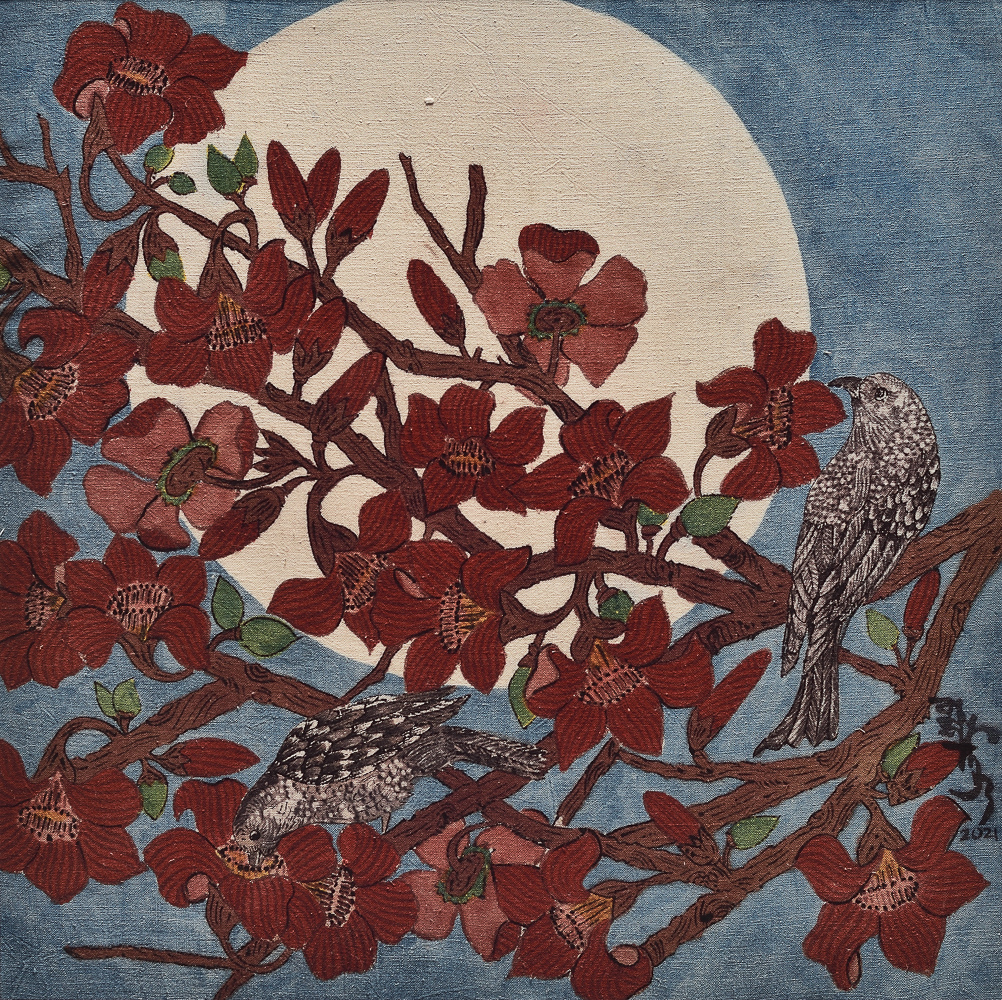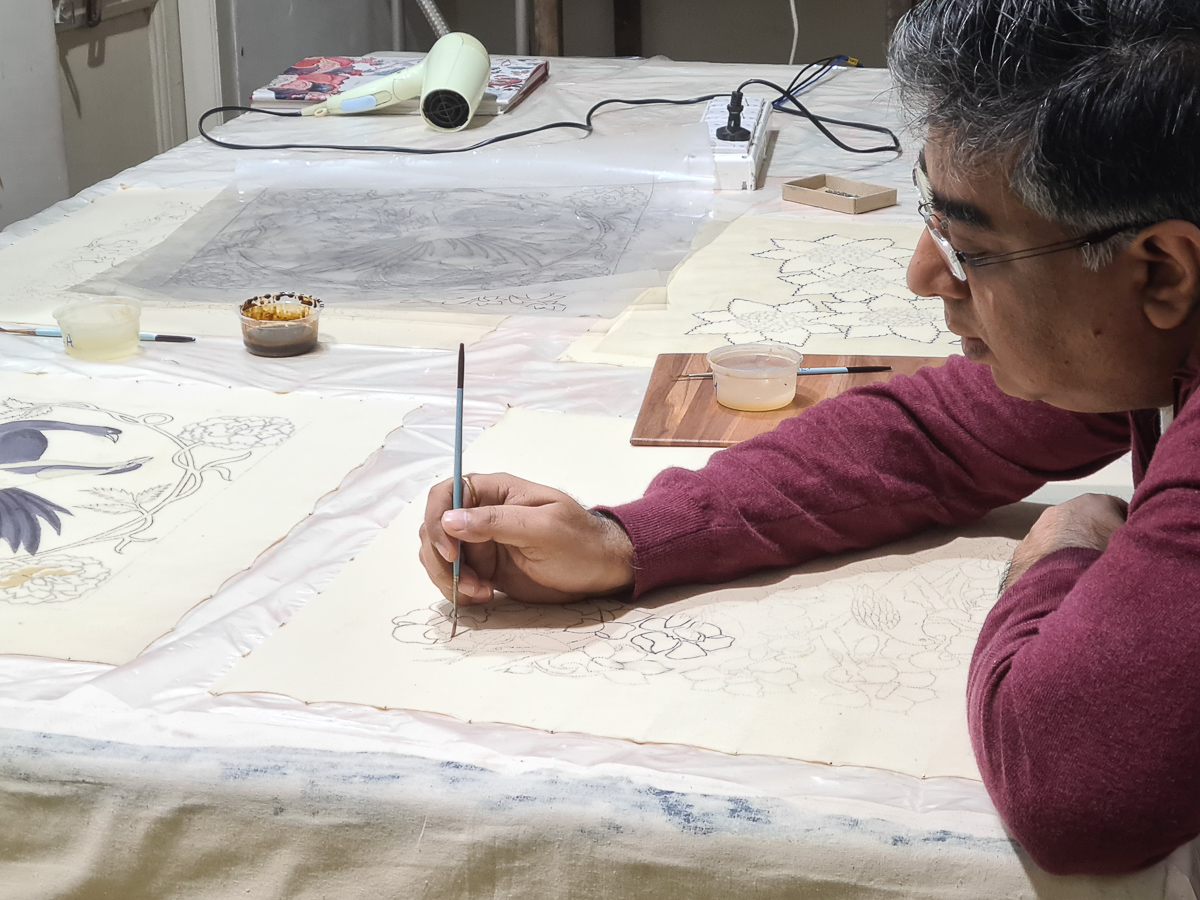
Our February Laurel goes to Bappaditya Biswas for his glorious chintz reflecting a conversation between birds and flowers.
Bappaditya describes the meaning and making of the work, and how it arose during lockdown:
This artwork is part of the series that I am painting now called The Conversation. In an urban concrete setting as more and more natural habitats of birds are diminishing, what must the conversation of a bird with the trees and flowers be? I am deeply influenced by the chintz the hand-painted textiles from India that ruled the market before the chemical dyes and the roller printers came into existence. So I form motifs from the chintz, its surreal flowers and leaves and add birds trying to paint their relationship. I am recreating the old motifs, taking bits and pieces and rejoining to create a new one.
The technique followed here is the old style of mordant painting as in the traditional style of painting chintz. It is then boiled in different plants including madder for red, marigold for yellow, hibiscus for the golden beige, iron for the black, heena for olive green. I dip in indigo vat for the blue and the yellow is dyed in marigold topped with indigo for the green. Unlike the kalamkari, we use the brush rather than the pen.
My workshop is in Kolkata, West Bengal in India. I started this work during the pandemic. I was always attracted to natural dye painting and chintz, so when the lockdown happened and was sitting at home, I started experimenting with materials available and read books and articles and journals. It took me two years to build upon it and to be finally able to control and achieve the desired shade and colour. Yet a lot needs to be explored and experimented with.

Bappaditya Biswas studied textile design at the National Institue of Fashion Technology, Kolkata. He then apprenticed at a fabric workshop and museum where he learnt screenprinting. While there he worked with textile artists to realise their artwork. He then worked as a design consultant with an export firm that developed embroidery samples for European haute couture, including Kenzo and Armani. In 2002 he left to create alternative markets for the traditional handloom weavers of Bengal who were experiencing a terrible slump in their sales. Working with his wife Rumi they set up a company, Bailou, to work closely with the community to keep their weaving traditions alive at the same time as bringing a new dimension to their skills. They hoped to provide employment to the younger generation who were migrating to the cities. They have also revitalised the indigo industry, working with farmers to replant indigo and to train in the dyeing process. They have been awarded the UNESCO Seal of Excellence for their work. Visit byloomonline.com, follow @bappaditya.bailou and like bappaditya.biswas.56

